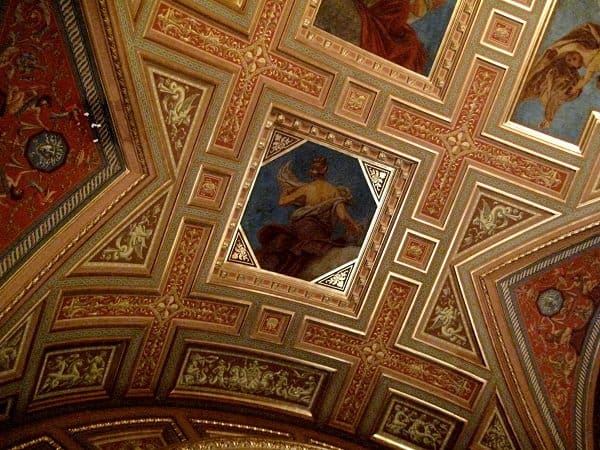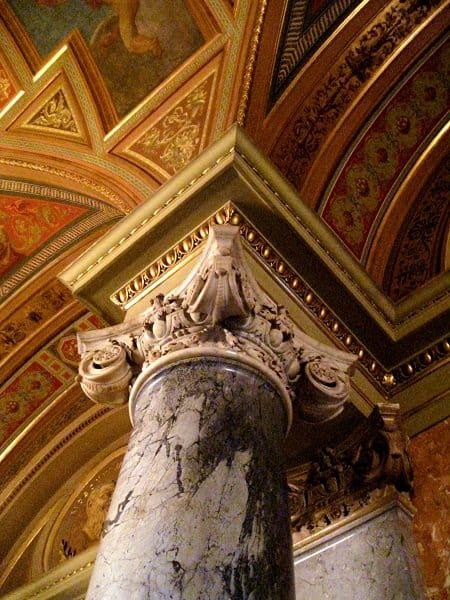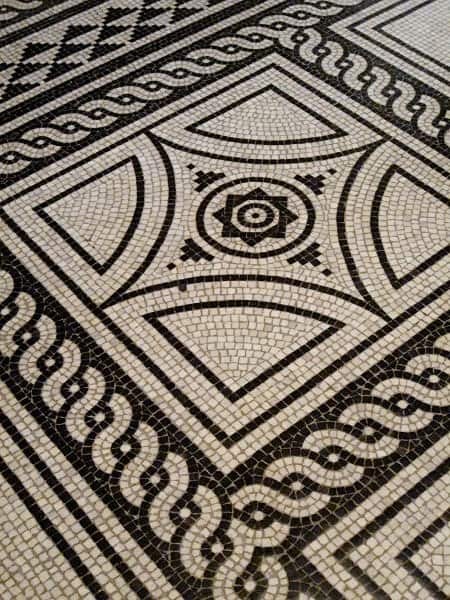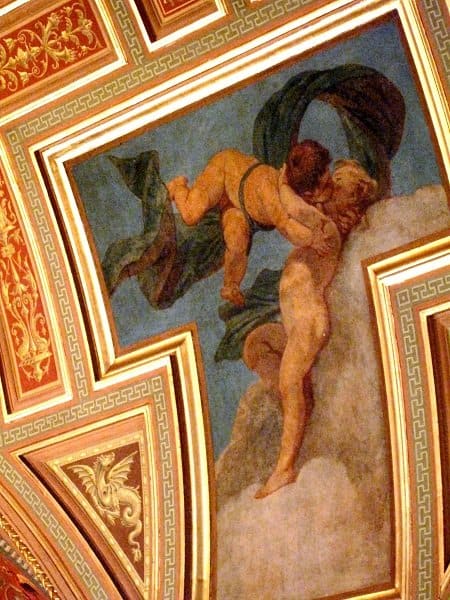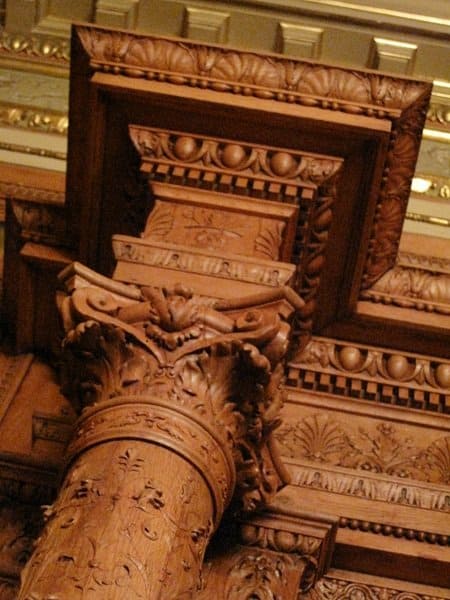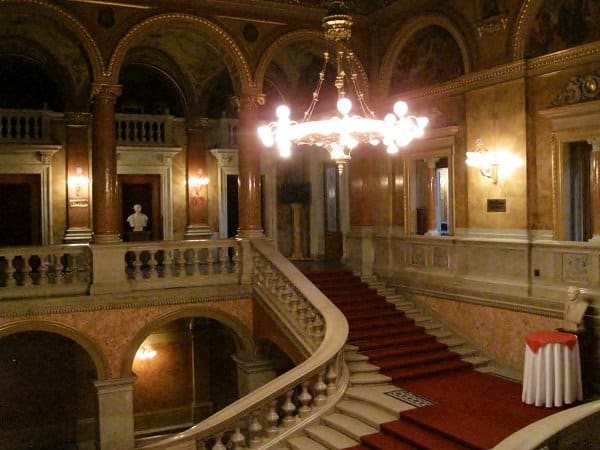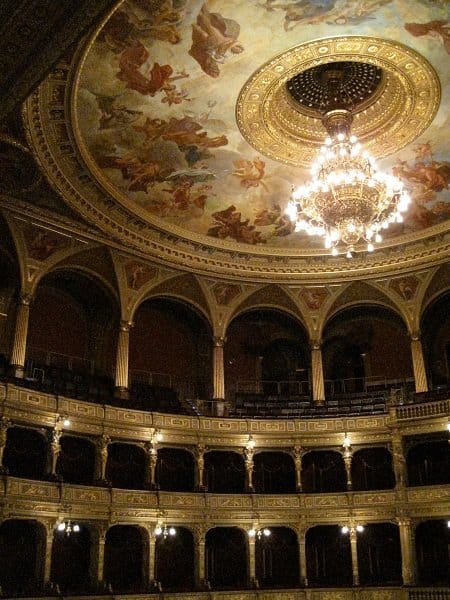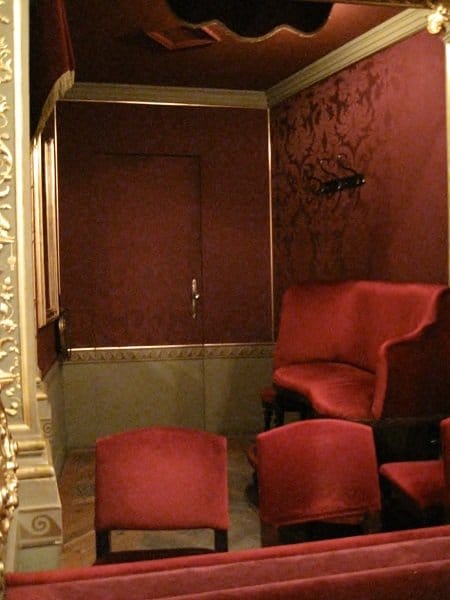Budapest is one of the most beautiful cities in Europe, home to many buildings of architectural importance. One of these is the gorgeous Hungarian State Opera House, which we had the pleasure of touring one afternoon.
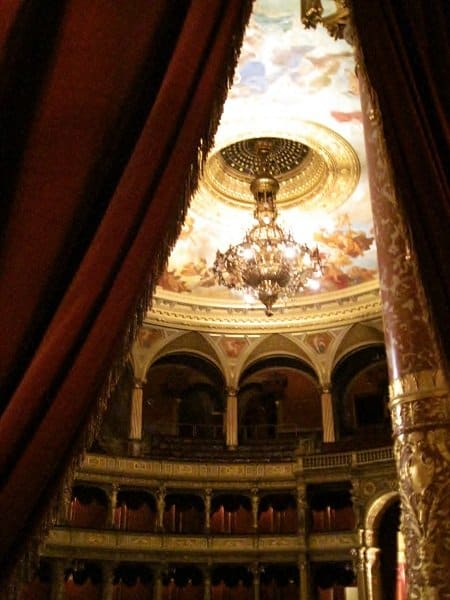
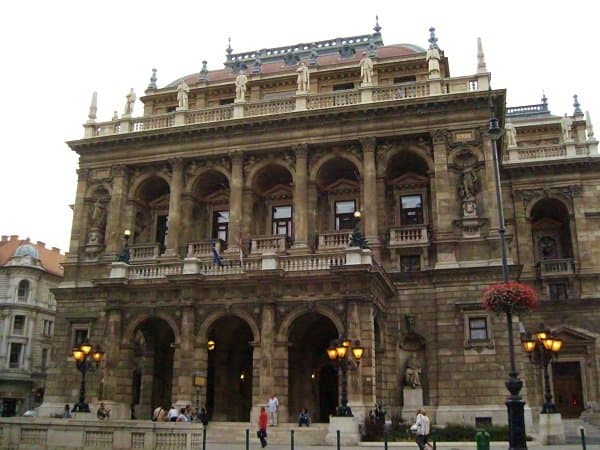 Located on the grand Andrássy út, the building is one of the city’s oldest theatres and considered one of the most beautiful in all of Europe. It was designed and built by Hungary’s most famous architect, Miklós Ybl and opened in September 1884 for the Millennium celebrations.
Located on the grand Andrássy út, the building is one of the city’s oldest theatres and considered one of the most beautiful in all of Europe. It was designed and built by Hungary’s most famous architect, Miklós Ybl and opened in September 1884 for the Millennium celebrations.
Emperor Franz Joseph commissioned the project, which explains its sheer magnificence and why the details of the building are so special and impressive. He wanted to create the most modern and opulent opera house of its time and, nine years after construction began, the house emerged as testament to the splendor of the Astro-Hungarian Empire. Interestingly, the emperor wasn’t given much credit for his benevolence in funding the construction and in return he barely uttered a compliment about it at the opening ceremony.
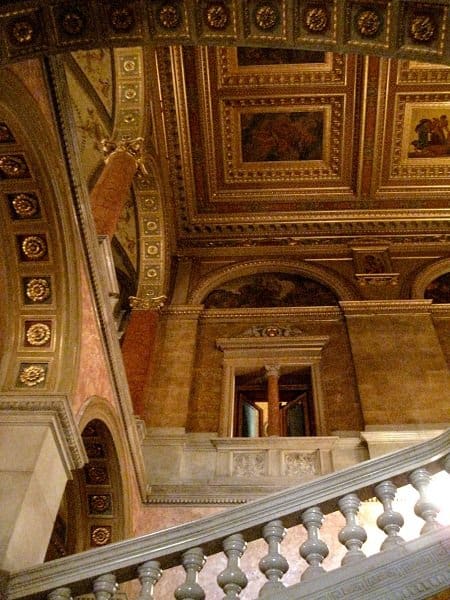
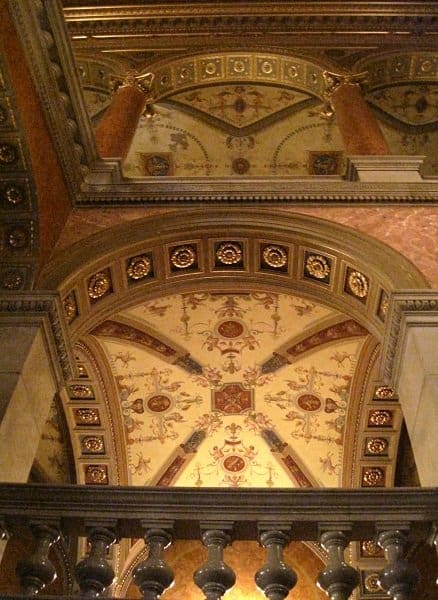
The grandeur of this neo-Renaissance building begins on the outside with large balconies and statues of notable composers like Verdi, Mozart and Beethoven. On either side of the entrance sit the statues of the opera house’s first director, Ferenc Erkel (who also composed the Hungarian national anthem) and Franz Liszt, Hungary’s most well-known composer. Once inside, visitors can see an imposing staircase, Greek mosaic floor tiles and smooth marble columns that support the arches. Throughout the interior, hundreds of frescoes, paintings and statues by famous Hungarian artists adorn the walls and ceilings. Many of the frescoes and statues are of Greek mythological scenes and figures, such as Olympus and the gods.
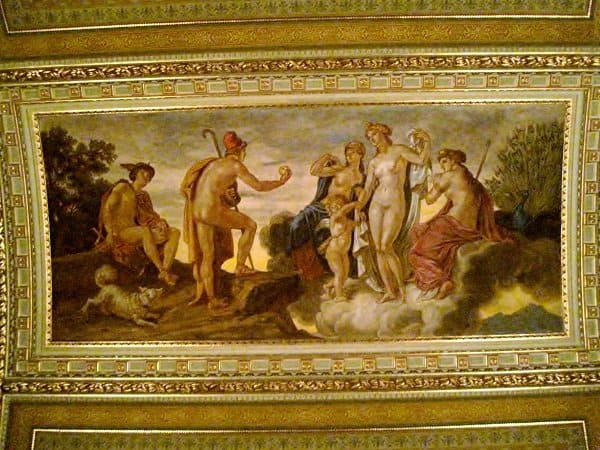
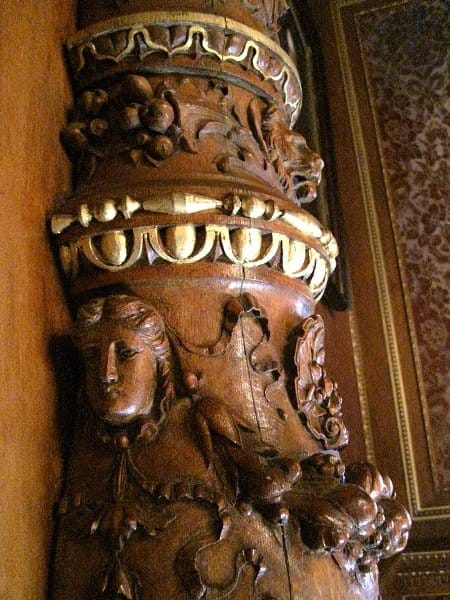
Our tour took us upstairs to the various rooms and we listened to stories about the history of the opera house and the royals and other important people who have attended performances. We viewed the Royal Staircase and the boxes before entering the main auditorium. It’s three stories, lavishly decorated in red and gold, can hold 1,261 people under the three-ton bronze chandelier.
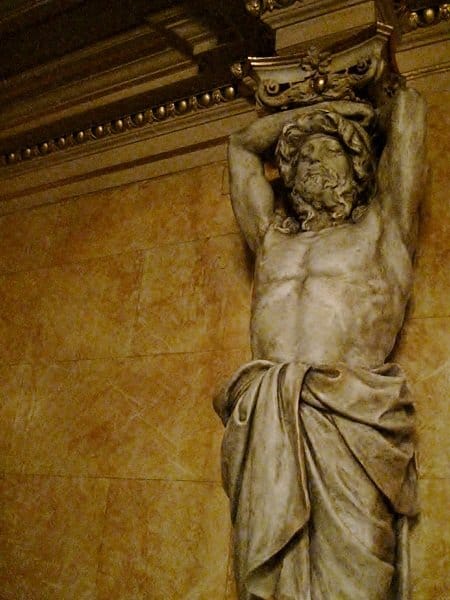
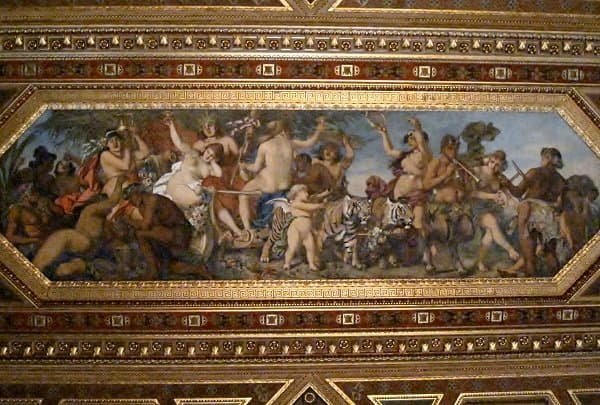
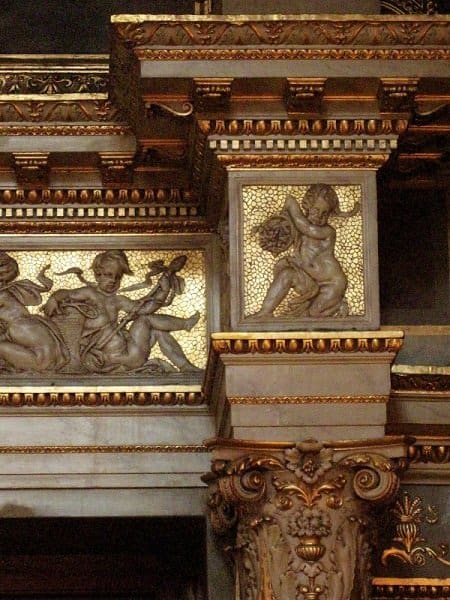 Surprisingly only about seven kilograms of gold were needed to decorate the auditorium. While it looks quite old, the stage hydraulics are made entirely of metal and safety features include an iron curtain and sprinklers, securing its position as one of the most modern theatres in existence. This is the result of Vienna’s Ringtheatre being devastated by fire while the Budapest Opera House was under construction.
Surprisingly only about seven kilograms of gold were needed to decorate the auditorium. While it looks quite old, the stage hydraulics are made entirely of metal and safety features include an iron curtain and sprinklers, securing its position as one of the most modern theatres in existence. This is the result of Vienna’s Ringtheatre being devastated by fire while the Budapest Opera House was under construction.
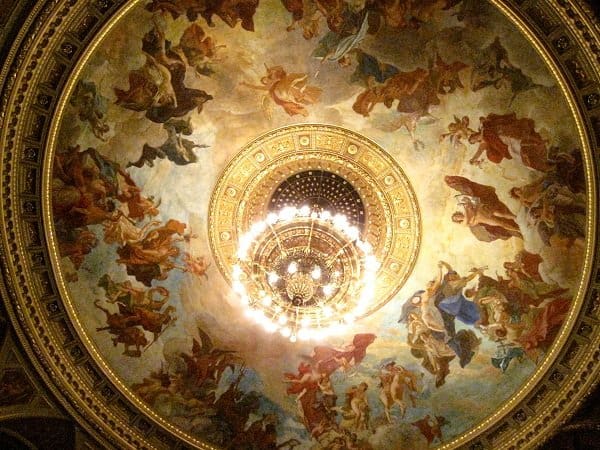
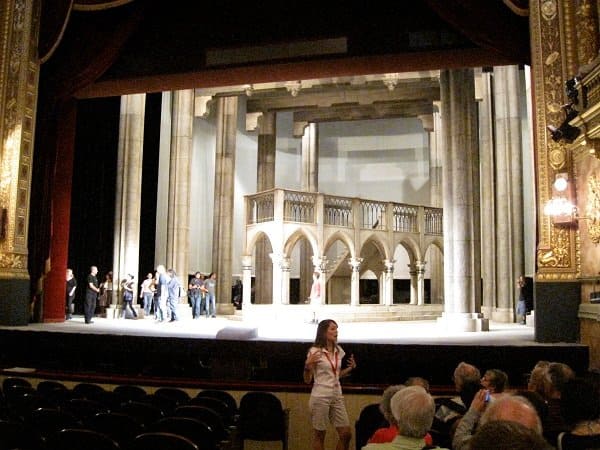
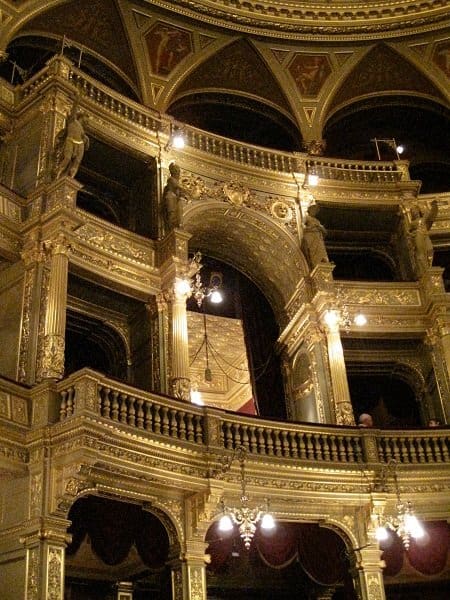 As one of the preeminent cultural theatres in Europe (it is third in acoustics to only Milan’s La Scala and the Palais Garnier in Paris), the standard of the performances coming out of the opera house were as important as its expensive physical presence. Gustav Mahler, Sergio Failloni, Otto Klemperer and János Fereencsik have been musical directors and conductors. Both opera and ballet are performed at the Opera House with about 50 major performances annually, during the main season taking place from September through June. While the theatre does not enforce a dress code, most attendees arrive in evening dress. This speaks to the importance of Budapest’s Opera House as not only an important architectural gem but also of its significance to the national identity of the Hungarian people.
As one of the preeminent cultural theatres in Europe (it is third in acoustics to only Milan’s La Scala and the Palais Garnier in Paris), the standard of the performances coming out of the opera house were as important as its expensive physical presence. Gustav Mahler, Sergio Failloni, Otto Klemperer and János Fereencsik have been musical directors and conductors. Both opera and ballet are performed at the Opera House with about 50 major performances annually, during the main season taking place from September through June. While the theatre does not enforce a dress code, most attendees arrive in evening dress. This speaks to the importance of Budapest’s Opera House as not only an important architectural gem but also of its significance to the national identity of the Hungarian people.
The Budapest Opera House is located at VI., Andrássy út 22 (metro: Opera). Guided tours are provided daily in English, French, German, Hungarian, Italian and Spanish. The cost is 2990HUF/adult and 1990HUF/student. For groups (more than 10 persons) it will be 2390HUF/adult and 1590HUF/student, and you need to reserve it 1 week before via email. ([email protected]). You’ll need a special bracelet, which costs HUF 500 (€2) if you want to take photographs. Afterwards it is possible to attend a mini concert (one opera singer sings 2 opera arias in 5 min.) for 690HUF/person. – it will be necessary to stand and please note that this mini concert does not take place in the auditorium. Ask for this ticket in the lobby when you purchase your tour as the concert does start immediately after the tour.
For information on regular performances of ballet and opera, visit the Hungarian State Opera website.
What is your favourite theatre in the world?
While in Budapest we stayed in the modern, comfortable Town Hall Apartments, which are in walking distance to the Opera House. EuropeNetHotels.com offer all the amenities you need to feel like a local with their collection of short-stay apartments located in 14 cities across Europe.
You may also enjoy these similar posts:
- 106shares
- Share on Facebook
- Pinterest94
- Tumblr
- Evernote
